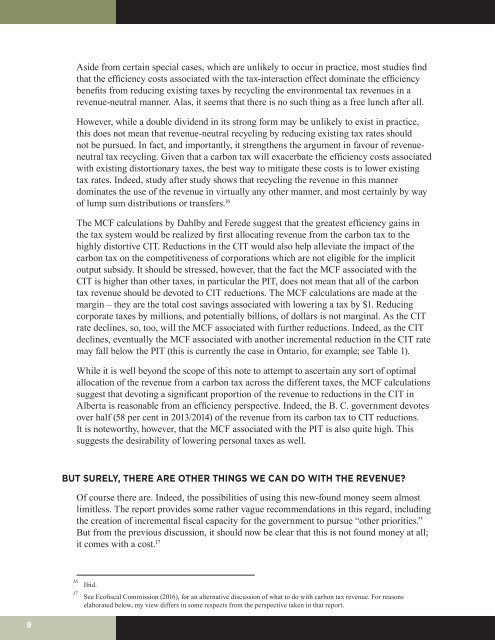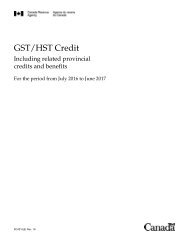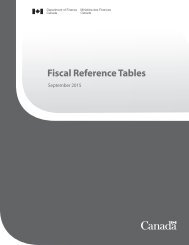MAKE THE ALBERTA CARBON LEVY REVENUE NEUTRAL
carbon-levy-revenue-neutral-mckenzie
carbon-levy-revenue-neutral-mckenzie
Create successful ePaper yourself
Turn your PDF publications into a flip-book with our unique Google optimized e-Paper software.
Aside from certain special cases, which are unlikely to occur in practice, most studies find<br />
that the efficiency costs associated with the tax-interaction effect dominate the efficiency<br />
benefits from reducing existing taxes by recycling the environmental tax revenues in a<br />
revenue-neutral manner. Alas, it seems that there is no such thing as a free lunch after all.<br />
However, while a double dividend in its strong form may be unlikely to exist in practice,<br />
this does not mean that revenue-neutral recycling by reducing existing tax rates should<br />
not be pursued. In fact, and importantly, it strengthens the argument in favour of revenueneutral<br />
tax recycling. Given that a carbon tax will exacerbate the efficiency costs associated<br />
with existing distortionary taxes, the best way to mitigate these costs is to lower existing<br />
tax rates. Indeed, study after study shows that recycling the revenue in this manner<br />
dominates the use of the revenue in virtually any other manner, and most certainly by way<br />
of lump sum distributions or transfers. 16<br />
The MCF calculations by Dahlby and Ferede suggest that the greatest efficiency gains in<br />
the tax system would be realized by first allocating revenue from the carbon tax to the<br />
highly distortive CIT. Reductions in the CIT would also help alleviate the impact of the<br />
carbon tax on the competitiveness of corporations which are not eligible for the implicit<br />
output subsidy. It should be stressed, however, that the fact the MCF associated with the<br />
CIT is higher than other taxes, in particular the PIT, does not mean that all of the carbon<br />
tax revenue should be devoted to CIT reductions. The MCF calculations are made at the<br />
margin – they are the total cost savings associated with lowering a tax by $1. Reducing<br />
corporate taxes by millions, and potentially billions, of dollars is not marginal. As the CIT<br />
rate declines, so, too, will the MCF associated with further reductions. Indeed, as the CIT<br />
declines, eventually the MCF associated with another incremental reduction in the CIT rate<br />
may fall below the PIT (this is currently the case in Ontario, for example; see Table 1).<br />
While it is well beyond the scope of this note to attempt to ascertain any sort of optimal<br />
allocation of the revenue from a carbon tax across the different taxes, the MCF calculations<br />
suggest that devoting a significant proportion of the revenue to reductions in the CIT in<br />
Alberta is reasonable from an efficiency perspective. Indeed, the B. C. government devotes<br />
over half (58 per cent in 2013/2014) of the revenue from its carbon tax to CIT reductions.<br />
It is noteworthy, however, that the MCF associated with the PIT is also quite high. This<br />
suggests the desirability of lowering personal taxes as well.<br />
BUT SURELY, <strong>THE</strong>RE ARE O<strong>THE</strong>R THINGS WE CAN DO WITH <strong>THE</strong> <strong>REVENUE</strong>?<br />
Of course there are. Indeed, the possibilities of using this new-found money seem almost<br />
limitless. The report provides some rather vague recommendations in this regard, including<br />
the creation of incremental fiscal capacity for the government to pursue “other priorities.”<br />
But from the previous discussion, it should now be clear that this is not found money at all;<br />
it comes with a cost. 17<br />
16<br />
17<br />
Ibid.<br />
See Ecofiscal Commission (2016), for an alternative discussion of what to do with carbon tax revenue. For reasons<br />
elaborated below, my view differs in some respects from the perspective taken in that report.<br />
9







